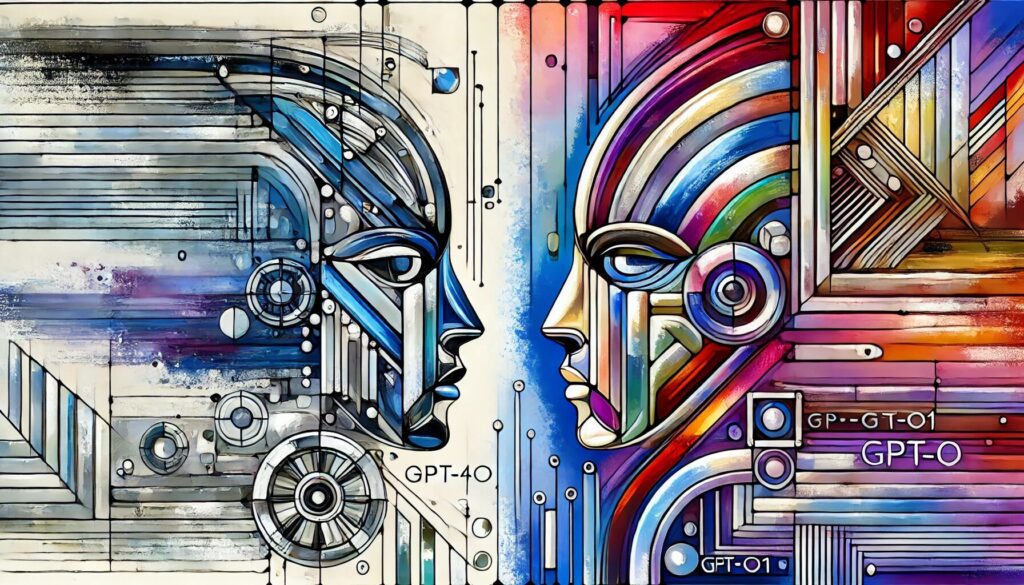
GPT-4o represents a significant advancement in the realm of emotional AI, specifically in its ability to detect and interpret emotional intonations in a user’s voice. This capability is crucial for creating more natural and empathetic interactions between humans and AI, making GPT-4o a powerful tool for applications where understanding the user’s emotional state is important, such as virtual therapy, customer service, and personal assistants.
GPT-4o can sense a wide range of emotional cues in the voice, including happiness, sadness, anger, frustration, excitement, and calmness. This is achieved by analyzing various acoustic features such as pitch, tone, rhythm, and volume. For example, a higher pitch combined with rapid speech might indicate excitement or happiness, while a lower pitch and slower speech could suggest sadness or disappointment. These cues are not just detected in isolation; GPT-4o considers the broader context of the conversation, making it more accurate in interpreting emotions.
Moreover, GPT-4o can pick up on more subtle emotional signals, such as nervousness masked by a calm tone or sarcasm hidden behind a cheerful voice. This is possible due to the model’s training on large datasets that include diverse examples of emotional expression across different voices and contexts. The model uses this training to recognize patterns in how emotions are typically expressed vocally, allowing it to make educated guesses about the user’s emotional state even in complex scenarios.
Performance in Recognizing Compound Emotions
Recognizing compound emotions—emotions that are a blend of multiple feelings—is one of the standout features of GPT-4o. This capability is crucial because human emotions are rarely simple or one-dimensional; more often, they are complex and multifaceted. For instance, a person might feel both relieved and anxious, or happy yet nostalgic. Recognizing these compound emotions requires a deep understanding of the nuances in both vocal and textual cues.
GPT-4o excels in this area due to its multimodal processing abilities, which allow it to analyze text, voice, and visual inputs together. This integrated approach means that the model can detect when different modalities are signaling different emotions. For example, if a user’s voice sounds relieved but their facial expression shows signs of lingering anxiety, GPT-4o can recognize this combination as a compound emotional state and respond accordingly. This is particularly useful in scenarios where emotional complexity is the norm, such as in counseling or high-stress customer service environments.
Furthermore, GPT-4o’s ability to recognize compound emotions is enhanced by its contextual awareness. The model doesn’t just analyze the immediate emotional cues but also considers the historical context of the conversation, including previous interactions and ongoing dialogue. This allows it to make more accurate assessments of the user’s emotional state, especially when dealing with emotions that may fluctuate or evolve over time.
How GPT-4o’s Multimodal Capability Enhances Conversation Flow
The multimodal capability of GPT-4o significantly enhances the flow and naturalness of conversations by allowing the model to seamlessly integrate and respond to text, voice, and visual inputs. This capability is a major step forward in AI interaction, as it allows users to communicate with the AI in a way that feels more organic and less constrained by the limitations of single-modal systems.
In practice, this means that users can start a conversation by speaking, then switch to showing an image or typing a message, and GPT-4o can maintain the thread of the conversation without losing context. For example, in a customer service scenario, a user might explain their issue verbally, then upload a photo of a product, and follow up with a typed question. GPT-4o can process all these inputs simultaneously, providing a coherent and contextually appropriate response that addresses the user’s needs holistically.
This ability to handle multiple forms of input in real-time makes interactions with GPT-4o feel more fluid and intuitive. Users are not forced to stick to one mode of communication, which can be limiting and unnatural, especially in complex or multifaceted interactions. Instead, they can communicate in whatever way feels most appropriate at the moment, whether that’s speaking, typing, or showing something visually. This flexibility is particularly valuable in environments where quick and efficient communication is critical, such as in medical consultations or technical support.
Techniques Used to Identify Compound Emotions
GPT-4o employs several advanced techniques to identify compound emotions, combining insights from deep learning, contextual analysis, and multimodal integration. One of the primary techniques is the use of deep learning algorithms trained on extensive datasets that include examples of a wide range of emotional expressions, both simple and complex. These datasets enable the model to learn how different emotions can overlap and interact, providing a foundation for recognizing compound emotions in real-world interactions.
In addition to deep learning, GPT-4o uses contextual analysis to enhance its emotional recognition capabilities. This involves not only analyzing the current input (whether text, voice, or visual) but also considering the broader context of the interaction. For example, the model might take into account the user’s previous statements, the overall tone of the conversation, and any relevant external factors, such as the user’s known background or current environment. This context helps the model to interpret emotional cues more accurately, especially in situations where the user’s emotions may be complex or contradictory.
Finally, multimodal integration plays a crucial role in GPT-4o’s ability to identify compound emotions. By simultaneously analyzing text, voice, and visual inputs, the model can detect when these different modalities are conveying different emotional signals. For instance, if the text suggests happiness but the voice tone indicates underlying tension, GPT-4o can recognize this as a compound emotion and tailor its response accordingly. This holistic approach allows the model to provide more nuanced and empathetic responses, which can be particularly valuable in sensitive or emotionally charged situations.
Limitations of GPT-4o’s Emotional Recognition
Despite its advanced capabilities, GPT-4o’s emotional recognition is not without limitations. One of the most significant challenges is the ambiguity inherent in human emotions. Even with sophisticated algorithms and extensive training data, accurately interpreting complex and subtle emotional states remains a difficult task. Human emotions are often context-dependent and can be expressed in ways that are not easily captured by AI, such as through sarcasm, irony, or cultural nuances.
For instance, while GPT-4o might correctly detect a quiver in the voice that suggests nervousness, it might miss the underlying reason for that nervousness if it is tied to a personal or cultural context that the model has not been trained to understand. This can lead to misinterpretations or inappropriate responses, particularly in cases where the user’s emotional expression is ambiguous or contradictory.
There are also significant ethical concerns surrounding the use of emotional AI, particularly in terms of privacy and the potential for emotional manipulation. The ability of machines to interpret and respond to human emotions raises questions about how this data is collected, stored, and used. For instance, there is a risk that emotional data could be used to manipulate users, whether for commercial gain or more nefarious purposes. Additionally, the accuracy of emotional recognition by AI is still a matter of debate among researchers, with concerns about the potential for bias and misrepresentation.
OpenAI has acknowledged these challenges and is committed to ongoing research and ethical reviews to address these issues. The company emphasizes the importance of transparency and user consent, particularly in how emotional data is handled and processed. However, as with any emerging technology, there are still many unknowns, and the full implications of emotional AI are yet to be fully understood.
In summary, while GPT-4o represents a significant advancement in AI’s ability to recognize and respond to human emotions, it also highlights the ongoing challenges and ethical considerations that must be addressed as this technology continues to evolve. The model’s ability to detect and interpret emotional intonations, recognize compound emotions, and enhance conversation flow through multimodal processing is impressive, but it is not without its limitations and potential risks.





